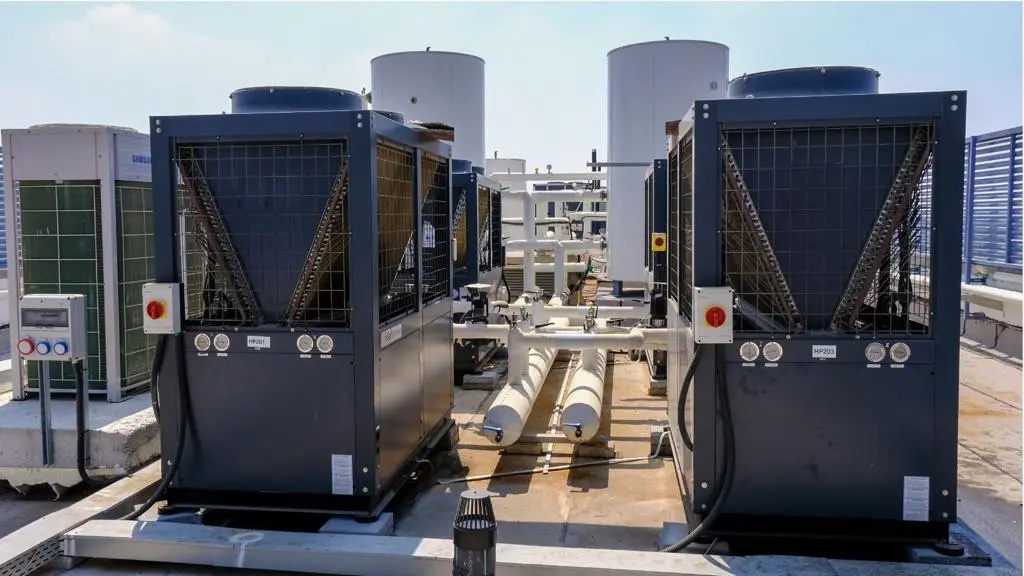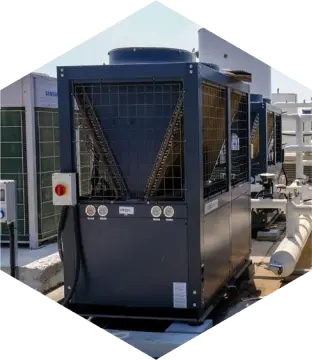The world focuses much of its attention on decarbonizing electricity and transportation in the ongoing global efforts to transition toward a sustainable future. Producing electricity using photovoltaic panels and wind turbines is a proven, straightforward way to achieve this, alongside storage technologies like batteries, Pumped-storage hydroelectricity (PSH), and many others.
However, it is equally important to address the decarbonization of heat. Heat accounts for 50% of the global energy end-use, and almost three-quarters of all industrial energy is heat, but only 10% comes from renewable energy.
In the world of heat, Thermal Energy Storage (TES) is a highly efficient and sensible storage technology since there is no need to convert electricity to heat and vice versa. This is especially true in using techs like solar thermal collectors, heat pumps using electricity from wind or solar, and waste heat collection. Moreover, TES can help mitigate some renewable electricity issues, such as peak shaving, and has a vast synergy potential with renewable electricity production.
This article discusses TES’s fundamental concepts, technologies, and applications, highlighting its technological and economic benefits and crucial role in decarbonization, particularly heat decarbonization.

The main types of TES
Thermal Energy Storage (TES) is any technology for storing thermal energy. TES systems can be categorized into three major types based on the storage medium and the method of energy storage:
Sensible heat storage (SHS) –
SHS is the most common type of TES, which involves storing thermal energy in a solid or liquid medium, such as water or rocks. These systems are relatively simple, cost-effective, and have widespread applications, such as industrial water heating and district heating and cooling systems.
Latent heat storage (LHS) –
It involves using phase change materials (PCMs) to store energy as latent heat during melting or solidification. A good example is ice-based storage cooling systems which freeze water into ice, then use it for cooling at a later time.
Thermochemical storage –
Utilizes chemical reactions to store and release thermal energy. Thermochemical systems rely on reversible chemical reactions that occur between different chemical compounds. Although still in the research and development phase, it has the potential to offer high energy density and long-duration storage.
Benefits of TES
Thermal Energy Storage offers many benefits in the pursuit of heat decarbonization. By enabling the integration of renewable and waste heat sources into energy networks, TES plays a crucial role in reducing greenhouse gas emissions and maximizing the utilization of sustainable resources –
- Integration of renewable energy sources – like all storage technologies, TES systems provide means to effectively integrate intermittent renewable energy sources, such as solar and wind. By storing excess energy generated during day time (for example, solar thermal heaters and photovoltaic panels), TES allows for a smooth and consistent power supply during low or no renewable energy production periods.
- Peak shaving – energy storage, such as TES, enables efficient and cost-effective energy management by shifting the timing of energy consumption, like in the case of peak shaving. During periods of low demand, excess energy can be stored for later use when demand is high. This demand-response approach helps to optimize energy consumption patterns, reducing the need for conventional energy sources during peak hours and lowering overall energy costs. TES is particularly efficient in the heat sector (50% of energy use) – for example, storing heat produced by heat pumps using renewable electricity without converting it back to electricity (see below).
- Grid stability and resilience – In turn, supply and demand-side management contribute to grid stability and resilience by providing flexibility in energy supply and demand.
- Increase overall efficiency by allowing waste heat recovery – effectively utilizing waste heat generated by industrial processes, power generation, and other sources. Instead of letting this valuable heat dissipate into the environment, TES systems can capture and store it for later use in heating applications or power generation.
- Pollution and carbon emissions reduction – through integrating renewable energy sources, optimizing energy supply and demand, and allowing waste heat recovery, TES significantly contributes to the decrease in pollution and carbon emissions.
TES main applications
Thermal Energy Storage, such as hot water storage, finds a wide range of applications across various sectors, basically wherever we use heat –
- Industrial Processes – food processing and manufacturing, pharmaceuticals, chemicals, etc.
- The hospitality industry – hotels, restaurants, theme parks, public swimming pools, etc.
- Public facilities – hospitals, military bases, etc.,
- District Heating and Cooling.
- Buildings.
Advantages over other types of energy storage
Wind and solar are intermittent. Thus, storage is crucial for creating a stable, long-term economy based on them. Today’s three most widely used large-scale energy storage technologies are Pumped-storage hydroelectricity (PSH), batteries, and TES, each with pros and cons; eventually, we will need a mix of all three plus several other technologies. However, TES has several advantages over PSH and batteries:
- Overall efficiency in heat production and storage –
- As 50% of all energy is used for heat, storing energy without converting it to electricity is highly efficient. When it comes to water heating, TES has a vast synergy with advanced solar heating systems.
- Heat pumps can use clean electricity in peak production periods when it’s available and cheap for heating a medium such as water. TES can store the heated medium and provide the heat directly during peak demand, high electricity tariffs, or both. Thus TES with advanced control systems can save a lot of energy and money for heat users and provide synergy with renewable electricity providers.
- TES can store large amounts of thermal energy in a relatively small volume for extended periods, ranging from hours to days or weeks.
- It has a minor environmental impact as it uses less space and no environmentally problematic raw materials.
- TES can be built anywhere, for example, on rooftops.
- This technology does not depend on expensive, geo-political-sensitive raw materials like current batteries.
- TES is easier to manage and maintain than PSH and has a much longer life span than batteries.
- Cost – all of the above translates into money. TES systems are cost-effective, efficient, reliable, constructed from available materials, and easy and cheap to operate.
Renewable heat + Thermal storage: a cost-effective technology for a better and cleaner future
Thermal Energy Storage (TES) has emerged as an economically sound, pivotal technology in decarbonizing heat and is crucial in our transition to a sustainable future. When integrated with solar heat collector/ photovoltaic panels + heat pumps, and advanced control systems, TES enables not only the decarbonization of heat by facilitating the use of renewable energy but also increases flexibility and resilience and reduces costs.
Contact our team today to learn more about TIGI’s advanced, clean commercial and industrial heat production and storage solutions.







